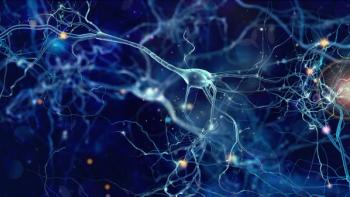
- Vol 42, Issue 10
Precision Diagnosis: The New Paradigm for Neurocognitive Disorders
Key Takeaways
- Diagnostic precision for neurocognitive disorders has improved with new tools, reducing historical inaccuracies in Alzheimer's disease diagnosis.
- Comprehensive assessments, including cognitive screening and physical exams, are essential for accurate diagnosis and treatment planning.
Discover how advanced diagnostic tools enhance the accuracy of dementia assessments, leading to better treatment strategies and patient outcomes.
SPECIAL REPORT: GERIATRIC PSYCHIATRY PART 2
Until recently, the diagnosis and treatment planning for persons living with dementia involved a great deal of guesswork. This was problematic because an incorrect etiologic diagnosis of mild or major neurocognitive disorder can bypass treatment of a remediable condition or lead to the prescription of an ineffective or even harmful medication. Autopsy studies have revealed a high rate of erroneous clinical diagnoses or the presence of unsuspected comorbid pathologies. In one large autopsy study, which focused on Alzheimer disease dementia (AD) diagnosis in the pre-PET era, 919 patients who were diagnosed with possible or probable AD or another dementia during life were evaluated neuropathologically after death. AD clinical diagnosis lacked precision, with sensitivity ranging from 70.9% to 82.7% and specificity from only 54.5% to 70.8%. Strikingly, 17% of patients labeled “probable AD” during life had no AD pathology at autopsy, whereas 39% of those not diagnosed with AD were found to have significant AD pathology. The high rates of false positives and false negatives associated with a standard clinical assessment highlight our current opportunity to increase diagnostic precision through more focused clinical assessment, cognitive screening, laboratory assessment including biomarkers, and judicious use of neuroimaging techniques.1
Fortunately, the new assessment tools available to us are facilitating early detection and management. We are now capable of greater diagnostic specificity, allowing for more targeted treatment strategies, including referral of appropriate patients for disease-modifying antiamyloid therapies for patients with AD. The diagnostic process is a nuanced, patient-centered, and collaborative activity involving thoughtful information gathering and clinical reasoning enhanced by integrating newer diagnostic tools, designed to determine the underlying pathology more accurately and facilitate counseling, psychoeducation, and individualized care.
Clinical Assessment
History and Examination: Detailed cognitive, functional, and behavioral history-taking remains the first step, followed by relevant neurological and physical examinations. Although a full assessment for cognitive impairment can be performed at any visit, cognitive impairment detection (screening) is a mandated component of the Medicare Annual Wellness Visit.2
A cognitive symptom history is best obtained from both the patient and a knowledgeable caregiver. Inquiry addresses the chronology of symptom development, functional changes, and disturbances in all 6 DSM-5-TR cognitive domains: complex attention, executive function, learning and memory, language, perceptual-motor function, and social cognition. Activity, sleep, nutrition, changes in personality and relationships, new behaviors including disruptive and dangerous ones, medication use, substance use, and preexisting or comorbid behavioral and medical conditions are discussed. Special attention is given to areas relevant to safety and special treatment needs such as mood symptoms, suicidality, anxiety, psychosis, kitchen risks, fall risks, access to weapons, and driving. When a caregiver has been involved, that person’s knowledge and strain can also be assessed. Family history, too, can shed light on the likelihood of a heritable condition, informing genetic counseling.
The general physical and neurological examination in screening for neurocognitive disorders focuses on identifying signs that may suggest underlying or contributing medical and neurological conditions. On physical exam, vital signs are assessed to rule out metabolic or systemic issues, and nutritional status is evaluated, as weight loss or malnutrition can be associated with cognitive decline. A thorough neurological exam includes assessment of cranial nerves, with attention to visual or hearing impairments and signs like abnormal eye movements. Motor function is evaluated for parkinsonian features such as rigidity or bradykinesia, or signs of upper motor neuron involvement such as spasticity or hyperreflexia. Gait assessment is crucial, as abnormalities may point to specific dementia subtypes (eg, shuffling in Parkinson disease dementia or magnetic gait in normal pressure hydrocephalus). Together, these findings help refine the differential diagnosis and guide further evaluation.
Cognitive Screening: The use of a screening tool offers structured insight into the pattern and severity of cognitive impairment. Brief cognitive screening instruments such as the Mini-Cog, Mini-Mental State Examination (MMSE), Montreal Cognitive Assessment (MoCA), and Saint Louis University Mental Status are commonly used in primary and specialty care settings to screen for cognitive deficits. The MMSE, although widely used, can be insensitive to mild deficits.3 In contrast, the MoCA provides a broader assessment of executive functions, language, and visuospatial skills, making it more sensitive for detecting mild cognitive impairment and early AD.4 For a more granular and domain-specific assessment in patients with complex or ambiguous symptoms, comprehensive neuropsychological testing can provide further information that often justifies the additional investment of time and expense. It evaluates multiple cognitive domains and sheds light on differential diagnosis of dementia subtypes.5 Neuropsychological assessment also helps to identify co-occurring behavioral conditions that can mimic or exacerbate cognitive symptoms. Because trained neuropsychologists can be difficult to access, computerized or teleneuropsychology platforms have been developed. These require further validation.6
The
A Thorough Examination
Routine Blood Tests: A screening laboratory evaluation is essential in assessing patients with cognitive symptoms, as several treatable medical conditions can mimic or exacerbate neurocognitive disorders.7 Basic labs, such as a complete blood count and comprehensive metabolic panel, help identify anemia, infection, electrolyte disturbances, and hepatic or renal dysfunction, any of which can contribute to delirium or cognitive deficits.8 Thyroid-stimulating hormone, vitamin B12, and folate levels are routinely checked, as deficiencies and thyroid dysfunction are well-documented reversible causes of cognitive disturbances.9 Lipid profiles offer insight into vascular risk, a key contributor to cerebrovascular disease and vascular dementia.10 Targeted testing for conditions like syphilis,11 HIV, and Lyme disease is warranted when clinically indicated, as these infections can present with cognitive symptoms.12,13 Early identification of central nervous system infections allows for timely intervention that may prevent further neurocognitive decline. Additional targeted blood or cerebrospinal fluid (CSF) tests are obtained on a case-by-case basis.
Structural Neuroimaging: Neuroimaging is a cornerstone in evaluating neurocognitive disorders, playing a vital role in diagnosis and the identification of potentially reversible causes. MRI is preferred over CT due to its superior resolution and sensitivity in detecting subtle neurodegenerative and cerebrovascular changes; however, CT remains a reasonable and often more accessible option for initial dementia workups, especially when MRI is unavailable or contraindicated.14 Specific imaging patterns can aid in distinguishing between different types of dementia: AD is often associated with medial temporal lobe and hippocampal atrophy; vascular dementia typically shows strategic or multiple infarcts, lacunes, and diffuse white matter changes; frontotemporal dementia can present with prominent frontal and/or anterior temporal lobe atrophy; and normal pressure hydrocephalus is characterized by ventriculomegaly disproportionate to cortical atrophy. These findings help guide diagnosis and management, particularly in cases with overlapping or ambiguous
clinical features.
Molecular and Functional Imaging: Advanced neuroimaging techniques yield insights into the underlying pathology of neurocognitive disorders and are increasingly used to support differential diagnosis when structural imaging or clinical features are inconclusive. Fluorodeoxyglucose PET detects regional brain hypometabolism, with characteristic patterns such as temporoparietal hypometabolism in AD, frontal involvement in frontotemporal dementia (FTD), and occipital hypometabolism in dementia with Lewy bodies (DLB). Amyloid PET imaging allows direct visualization of amyloid plaques and is positive in AD. Tau PET, an emerging modality, maps the distribution of tau pathology and may further refine diagnostic accuracy. Additionally, dopamine transporter imaging with DaTscan (a type of single-photon emission CT scan) is useful in identifying synucleinopathies by demonstrating reduced dopamine transporter activity, supporting a diagnosis of DLB or Parkinson disease dementia. These advanced imaging tools complement clinical assessment and other biomarkers, particularly in complex or atypical cases. They also assist in screening individuals for assignment to disease-specific therapies or appropriate clinical trials.
Cerebrospinal Fluid: CSF biomarkers remain a valuable tool in the diagnostic evaluation of AD and other neurodegenerative conditions, particularly when imaging findings are inconclusive or in patients with early-onset or rapidly progressive cognitive decline. Although lumbar puncture is invasive and may present access barriers, it provides valuable pathological insights. In AD, the characteristic CSF profile features a reduced level of amyloid-β 42 (Aβ42) relative to amyloid-β 40 (Aβ40), reflecting cortical amyloid plaque deposition, along with elevated total tau and phosphorylated tau, which indicate neuronal injury and tau pathology, respectively. This biomarker pattern has high diagnostic accuracy and can help differentiate AD from other causes of cognitive impairment.
Emerging Blood-Based Biomarkers: For certain neurocognitive disorders, especially AD, emerging blood-based biomarkers are becoming more cost-effective and scalable for use in specialty and even primary care settings, offering a promising alternative to more invasive or expensive diagnostic tools like PET imaging or CSF analysis. Key plasma biomarkers include the Aβ42/40 ratio, which reflects amyloid pathology, and phosphorylated tau species such as p-tau181 and p-tau217, which indicate tau pathology and show strong concordance with AD-specific changes. Additionally, neurofilament light chain serves as a general marker of neuronal damage and is elevated in a range of neurodegenerative conditions, including vascular dementia and AD. These assays have the potential to facilitate earlier and broader screening for neurodegenerative disorders in routine clinical practice.15
Genetic Testing: The APOE ε4 allele is the strongest known genetic risk factor for AD. However, APOE testing serves as a risk indicator rather than a definitive diagnostic tool. It should not be performed in asymptomatic individuals, given the specific applications and important ethical implications. Some patients with early-onset dementia, before they are aged 60 years, carry a specific known gene mutation for AD (APP or PSENT1/2) or FTD (MAPT or GRN). Genetic testing plays an essential role in diagnosing heritable forms of dementia.
Other Supportive Tests
In appropriate clinical contexts, electroencephalography and quantitative electroencephalogram (EEG) are clinically accessible tools capable of detecting neurophysiological changes in various conditions. They are particularly useful in identifying delirium and play an integral role in diagnosing Creutzfeldt-Jakob disease, where characteristic EEG changes vary by disease stage. Functional assessments such as gait analysis serve as simple, reliable, and quantitative measures to evaluate gait impairment, especially in idiopathic normal pressure hydrocephalus. Additionally, sleep studies are valuable in assessing REM sleep behavior disorder, commonly associated with DLB and Parkinson disease dementia. The
Concluding Thoughts
Accurate detection and diagnosis of neurocognitive disorders, which is essential for accurate treatment planning, relies on a multimodal approach that integrates clinical evaluation, neuroimaging, and biomarkers. Clinical evaluation, including detailed history-taking, cognitive screening, and functional assessments, remains the cornerstone of an initial diagnostic workup. However, clinical tools alone often lack the specificity to distinguish between overlapping syndromes.
Structural and functional imaging provide critical information, and CSF and plasma biomarkers can improve diagnostic accuracy, help guide treatment, and even predict progression from mild cognitive impairment to AD.16 Although this comprehensive approach is often limited by cost, insurance barriers, and geographic access, emerging tools, especially blood-based biomarkers, hold promise for cost-effective, scalable diagnosis, potentially reducing diagnostic disparities.
Dr Husain-Krautter is an assistant professor of psychiatry at the Icahn School of Medicine at Mount Sinai in New York, New York. Dr Ellison is a professor of psychiatry and human behavior at Sidney Kimmel Medical College, Thomas Jefferson University in Philadelphia, Pennsylvania.
References
1. Abu Raya M, Zeltzer E, Blazhenets G, et al.
2. Jacobson M, Thunell J, Zissimopoulos J.
3. Tombaugh TN, McIntyre NJ.
4. Nasreddine ZS, Phillips NA, Bédirian V, et al.
5. Huntley JD, Hampshire A, Bor D, et al.
6. Panzavolta A, Cerami C, Caffarra P, et al.
7. Arvanitakis Z, Shah RC, Bennett DA.
8. Iglseder B, Frühwald T, Jagsch C.
9. Gale SA, Acar D, Daffner KR.
10. Iadecola C.
11. Beauchemin P, Laforce R Jr.
12. Antinori A, Arendt G, Becker JT, et al.
13. Koedel U, Fingerle V, Pfister HW.
14. Wahlund LO.
15. Zhao Y, Xin Y, Meng S, et al.
16. Blennow K, Zetterberg H.
Articles in this issue
2 months ago
Insomnia in Older Adults: A Holistic Approach2 months ago
Dr Max Fink, Farewell and Thank You2 months ago
The Use of Aripiprazole for Bipolar Disorder2 months ago
The HarvestNewsletter
Receive trusted psychiatric news, expert analysis, and clinical insights — subscribe today to support your practice and your patients.

















